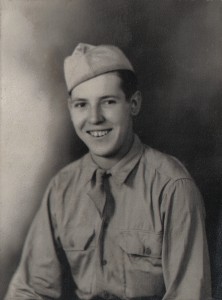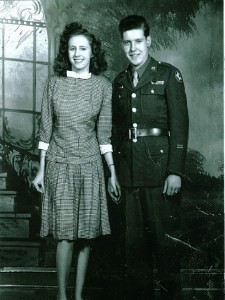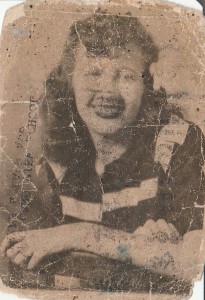Photo courtesy of www.globeuniversity.edu
I was recently approached by Head Muse and dear friend Kelly Belmonte about doing a “Blog Hop” which provides insight into my writing process. Her Blog Hop is located at the wonderful site All Nine Muses. Kelly invited several others, including fellow Muse Holly Ordway, to contribute. Her excellent post is located at Hieropraxis.
By the way, both of these fantastic ladies have upcoming releases: Kelly’s new chapbook, Spare Buttons, is available for pre-order through Finishing Line Press. Holly’s memoir of her spiritual conversion, Not God’s Type: An Atheist Academic Lays Down Her Arms, is an expanded edition available October 7th. It is a fascinating narrative of her journey from atheism to Catholicism. Pre-order it here.
———————————————————————————————————————————–
1. What am I working on?
Right now, I am juggling a few different projects. One is the C.S. Lewis and Leadership book which is derived from dissertation research. I struggled with various structural issues and then my friend and fellow Lewis scholar Charlie Starr suggested a good way to work everything in as I wanted. It is far from complete, but with some extra research and additional “seat time” in front of my computer, it will hopefully come along at a sufficient pace. I am also contributing a chapter to a book examining a new, emerging angle on C.S. Lewis. I cannot reveal too much about that yet, but it will be a great collaborative examination. Very excited for its release.
I’m also slowly nibbling on a collection of poetry. Poetry is very different than prose for me. I type academic prose, but I scribble poetry into journals. I can’t sit down and say, “I’m going to write a poem”. I have to wait around until something shows up. I know that is counterintuitive to everything you have read about writing through blocks, but I have to be patient with the Muse! Sometimes, if I can listen to music and quiet my mind, lines begin to come. But the most significant aspect is finding that center, the opportunity to unplug, to exhaustively exit the hamster wheel, and just breathe. It’s a beautiful thing.
2. How does my work differ from others in its genre?
I am the first person to apply leadership theory to an individual predominantly known as an author. Beforehand, dissertations dealing with the same topic discussed Abraham Lincoln, or Gandhi, or Martin Luther King, Jr. (all worthy recipients!). I prefer to set my own path. It creates more work for me, but it gives me a great deal of satisfaction to carve new philosophical pathways in leadership studies and Lewis studies. When I first began researching, I received some discouraging comments, such as, “But didn’t he write children’s books?”
That type of criticism and discouragement serves to fuel my efforts. Just like a great story, everybody needs a little adversity to motivate them sometimes. I began a blog right after I graduated and just wrote what I felt. Honestly, I was a little shocked that people were reading what I wrote, because there are so many blogs, and frankly, lots of noise on the internet. You have to set yourself apart without sacrificing the essence of who you are. I like to be different (okay, weird) and explore uncharted territory in what I write. Most of the time, I am naturally drawn to that anyway because I have always been insatiably curious, but the work is intrinsically rewarding when you discover something new.
3. Why do I write what I do?
I think one of the most important things in art is to be honest with yourself. Write what you feel, not what may be popular or lucrative. As an instructor, my favorite class is Creative Writing. It is encouraging and nourishing to read and shape stories with my students. I urge them all of the time to write from the heart. I would be a hypocrite if I didn’t take their advice and do the same. I write it because it makes me happy. I write it because it is what my soul desires to share.
4. How does my writing process work?
Funny you ask that. I wish I could tell you that I sit down for 30 minutes a day or an hour a day and work. Depending on my schedule (and my motivation *cough*), I may sit down for some time, but it seems to come in waves. There are some times where work responsibilities are heavier than others and I cannot devote the time. I struggle with balance. I incessantly edit while being consistently impatient – not a good combination. I struggle to edit but I enjoy editing. It’s a strange sensation. I used to type up a piece and post it immediately. However, now I tend to wait at least a day and revisit it with a very critical eye. When I sit on a piece and edit, I am always satisfied with the results, but it is the waiting that I truly struggle with in most cases. George Orwell recommended that writers compose a piece, then place it in a drawer for a year. After a year, he/she can unearth it and begin alterations. After a year, I would probably forget and have a bunch of “in utero” projects that remain incomplete (similar to Tolkien).
My Muse is a rowdy, unpredictable gal. She tends to wake me up around 3-4 A.M. and attempt to persuade me to write down “a few verses”.
This is a typical exchange:
Muse: Hey! Hey! Hey! I have this awesome verse for that poem about the old Celtic cross you saw. It’s vivid, it’s alliterative…
Me: [rolls over]
Muse: Ahem, are you listening? It’s fantastic and THEN I had this great idea for the poem about Shakespeare and the one about emotional bankruptcy. Aw, classic.
Me: Can you come back in like three hours?
Muse: No, you know how I keep my hours. This is prime time. Get up. I mean it. Go get your stinkin’ notebook and write this down. DO IT!
Me: Okay, hang on. *Snoring*
Muse: HEY! I said, Get up now!!
Because of her (sometimes intolerable) insistence, I wrote a poem for her once:
“On Writing”
Oh gentle tyrant,
How you beckon during inconvenient moments
Diverting these hands from banal obligations
Or sweet repose.
True Muse or nocturnal nemesis?
And so I rise
Grasp the weathered notebook
And stare at the blank page.
Sigh, sighs,
Then syllables
Flow forth unfiltered.
A joyous slave to the verse
I obey
And in my toil I rejoice
To find myself again.
Be satisfied, and
Smile muse, as your coaxing is rewarded.
For you remain with this scribbling
Ever victorious.
![write[1]](http://crystalhurd.com/wp-content/uploads/2014/07/write1-300x202.jpg)
![10489832_10152543660564487_1457025812771586273_n[2]](http://crystalhurd.com/wp-content/uploads/2014/07/10489832_10152543660564487_1457025812771586273_n2-300x225.jpg)
![10524353_10152543660339487_8231576264301350885_n[1]](http://crystalhurd.com/wp-content/uploads/2014/07/10524353_10152543660339487_8231576264301350885_n1-300x225.jpg)



![10552630_10152543657089487_3816831223111004220_n[1]](http://crystalhurd.com/wp-content/uploads/2014/07/10552630_10152543657089487_3816831223111004220_n1-225x300.jpg)
![10552501_10152543660749487_1452780777182698932_n[1]](http://crystalhurd.com/wp-content/uploads/2014/07/10552501_10152543660749487_1452780777182698932_n1-300x225.jpg)
![10249709_10204100687627582_7156658731410558304_n[1]](http://crystalhurd.com/wp-content/uploads/2014/07/10249709_10204100687627582_7156658731410558304_n1-300x200.jpg)